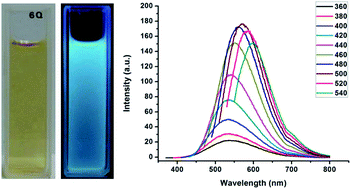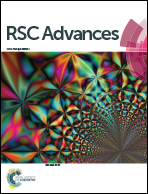Electro-optic and dielectric properties of a ferroelectric liquid crystal doped with chemically and thermally stable emissive carbon dots
Abstract
We investigated the effect of carbon dot doping at concentrations ranging from 0.05 and 0.10 wt% on the electro-optic and dielectric dynamics of a ferroelectric liquid crystal mixture. The phase transition temperature remained unchanged in the presence of the carbon dots, while the change of the tilt angle is on the borderline of experimental accuracy. A remarkable enhancement of 31% in the switching response, 15% in spontaneous polarization and 20% in dielectric constant has been noticed for the nanocolloids comprising 0.10 wt% carbon dots. The increase in response time is attributed to the increase in the conductivity and rotational viscosity. The modification of the spontaneous polarization and dielectric constant are attributed to the parallel coupling between carbon dots and dipoles of Ferroelectric Liquid Crystals (FLCs) and may also be due to the enhancement of the ordering of the FLC upon carbon dot doping. The Goldstone mode relaxation frequency decreased with carbon dot doping, while the dc conductivity increased by one order of magnitude for the 0.1 wt% mixture. No ion capturing has been seen in these nanocolloids and the localized electric field also remained unaffected by carbon dot doping.


 Please wait while we load your content...
Please wait while we load your content...